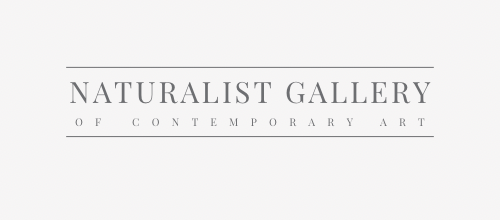Color theory is essential in the realms of art, design, and branding.
Color theory in art is the study of colors and their relationships, effects, and impacts. It explores how colors mix, match, contrast, and influence emotions, using tools like the color wheel to guide artists in creating visually appealing and meaningful compositions.
Understanding how colors interact on the color wheel and their psychological impact is crucial for artists, designers, marketers, and brand owners.
Explore our curated selection of contemporary artists from around the globe.
Naturalist Gallery offers artist representation internationally. Apply your art.

1. Understanding the Color Wheel
- Primary Colors: Yellow, blue, and red, the foundation of all other colors.
- Secondary Colors: Orange, purple, and green, formed by mixing primary colors.
- Tertiary Colors: Combinations of primary and secondary colors, including vermilion, magenta, violet, teal, chartreuse, and amber.
2. Color Relationships
- Complementary Colors: Colors opposite each other on the color wheel, creating bold, high-contrast visuals.
- Analogous Colors: Adjacent colors on the wheel, offering a calming, aesthetically pleasing effect.
- Color Schemes: Various schemes like monochromatic, complementary, triadic, and analogous are used to create harmony and evoke specific moods in art.

3. The Science Behind Color Perception
- How We See Colors: The role of light, the electromagnetic spectrum, and our eyes' rods and cones in color perception.
- Additive and Subtractive Colors: Exploring how colors are formed in different mediums, such as light (RGB) and pigments (CMYK).
4. Alternative Models of Color Relationships
- Painters’ Color Triangle: Emphasizing primary colors and their combinations.
- Printers’ Color Triangle: Focused on the CMYK color model for printing.
- Goethe’s Nine-Part Harmonic Triangle: Integrating both artistic and printing primary colors for mood-based color selection.
5. Practical Application of Color Theory
- Selecting Colors for Art: Using color theory to enhance artistic skills and create visually appealing work.
- Balancing and Contrasting Colors: Tips for choosing and applying colors effectively in art.

6. The Psychological Impact of Color
- Meaning and Emotion in Colors: How different colors can influence mood, emotion, and perception in art and design.
7. Exploring Color Theory Through History
- Evolution of Color Theory: From early principles to modern understandings, including the development of the color wheel.
8. Getting Hands-On with Color
- Exercises and Experiments: Practical tips for artists to explore color theory through hands-on application.
Understanding color theory is vital for artists to enhance their work and convey their intended message effectively. Through mastering color relationships and exploring the emotional impact of colors, artists can unlock new dimensions in their creative expression.
Learn more About Naturalist Gallery of Contemporary Art.
You may also find the following articles helpful:
Form: Understanding Dimensionality
Tone in Art: Understanding Color Value
Line: Types, Techniques, Element of Art
How to Get Your Work in an Art Gallery


